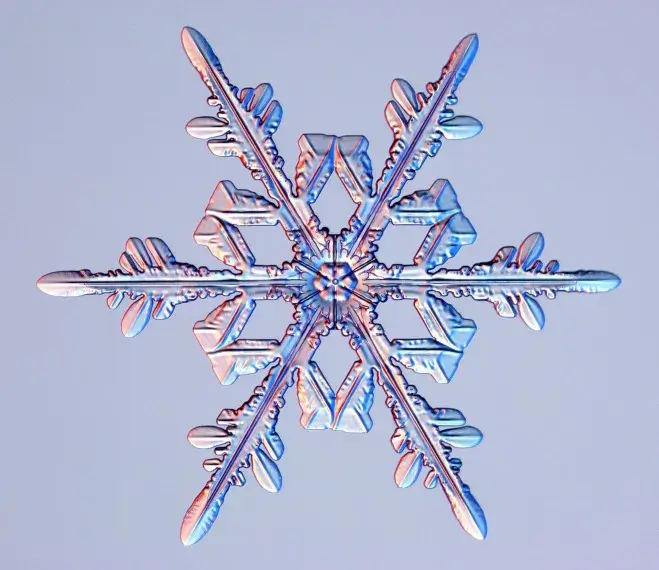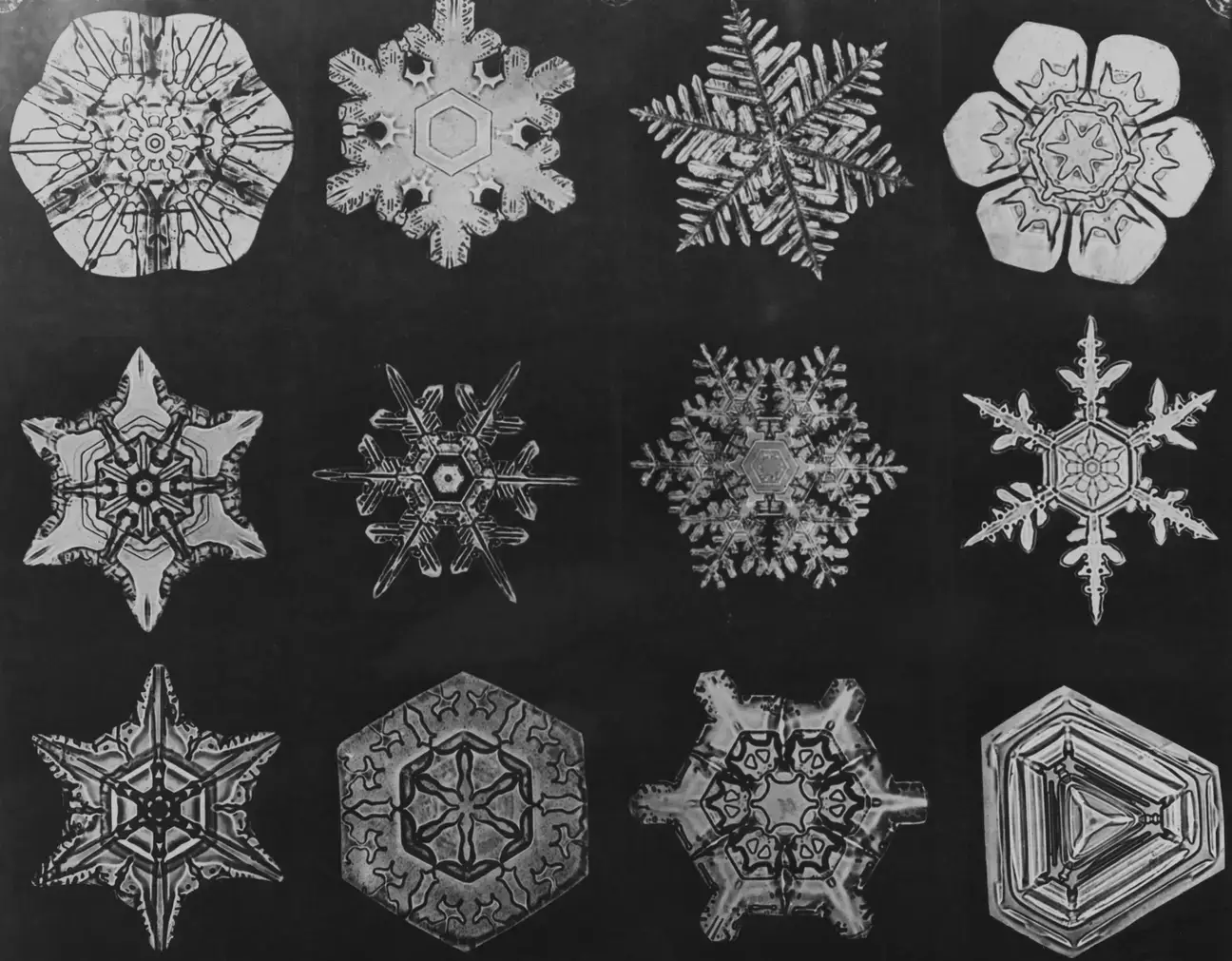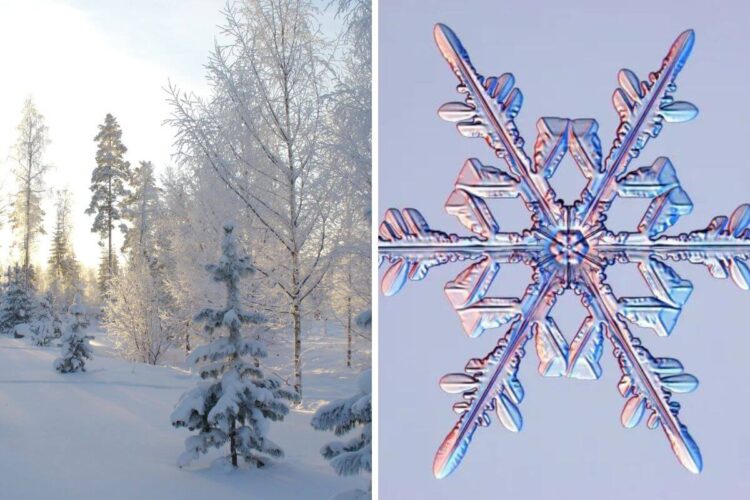We all know snowflakes always have a unique shape right? But did you know they can actually be pretty big? Like large pizza big? Read on.
Have you ever wondered what the biggest snowflake ever recorded looks like? Well, wonder no more! In 1887, a colossal snowflake measuring a whopping 15 inches wide and 8 inches thick fluttered down from the sky in Montana, and it has held the record for the biggest snowflake ever since.
This isn’t just any snowflake, though. This snowflake is a marvel of nature, a testament to the delicate beauty and intricate patterns that can be formed from a simple combination of water and air. But how do these feathery giants come to be?

Snowflakes form when tiny water vapor particles in the atmosphere attach themselves to a microscopic speck of dust or pollen.
As the temperature drops, more and more water vapor condenses onto the speck, eventually forming a six-sided ice crystal. As the crystal continues to grow, it branches out into intricate patterns, each one unique and fleeting.
The conditions that led to the formation of the record-breaking snowflake were truly special. Just the right combination of temperature, humidity, and wind speed must have been present to allow the crystal to grow to such an impressive size.
While the 1887 snowflake may be the biggest one ever recorded, there have been other contenders throughout history.

In 1985, a snowflake with a diameter of 8 inches was reported in Colorado, and in 2013, a 12-inch snowflake was spotted in Japan.
These giant snowflakes are a reminder of the awe-inspiring power and beauty of nature. They teach us that even the smallest things, like a tiny ice crystal, can become something truly remarkable under the right conditions.
So next time you catch a snowflake falling from the sky, take a moment to appreciate its delicate beauty and wonder at the journey it has taken to reach your palm. You might just be holding a tiny piece of history in your hand.









